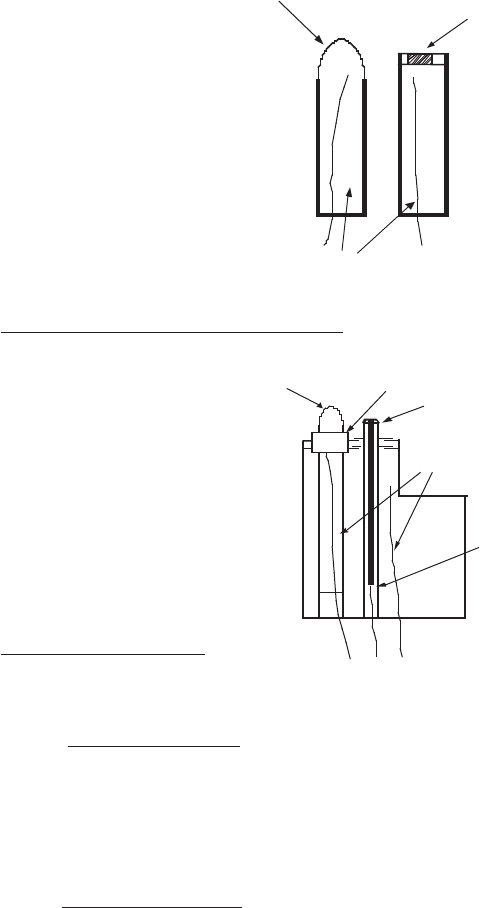Manual

44
The problem is, on the other side of the membrane is an unknown test
solution, not potassium chloride. The outside electrode, also called
plug in place of a glass barrier to
migration of liquids through the plug
occur, and this limits the lifetime of a
pH junction from depletion of solution
inside the reference junction or from
contamination. The junction may
be damaged if dried out because
insoluble crystals may form in a
layer, obstructing contact with test
4.
The sensor in the Ultrameter II
construction in an easily
replaceable package. The sensor
body holds an oversize solution
supply for long life. The reference
junction “wick” is porous to provide
a very stable, low permeable
interface, and is located under the
glass pH sensing electrode. This
construction combines all the best
features of any pH sensor known.
The basics are presented in
a.
The most common sensor problem will be a clogged junction because
a sensor was allowed to dry out. The symptom is a drift in the “zero”
II 6Psi does not allow more
than 1 pH unit of offset during calibration. At that point the junction is
unreliable.
b. Sensitivity Problems
can diminish sensitivity and cause a long response time.
Glass surface
Figure 33
KCl solution
Electrode wire
Electrode
wire
H
+
ions
Junction
Plug
KCl solution
Figure 34
Junction plug
Platinum button
H
+
ions
Electrode wires
Glass
Glass
Surface










